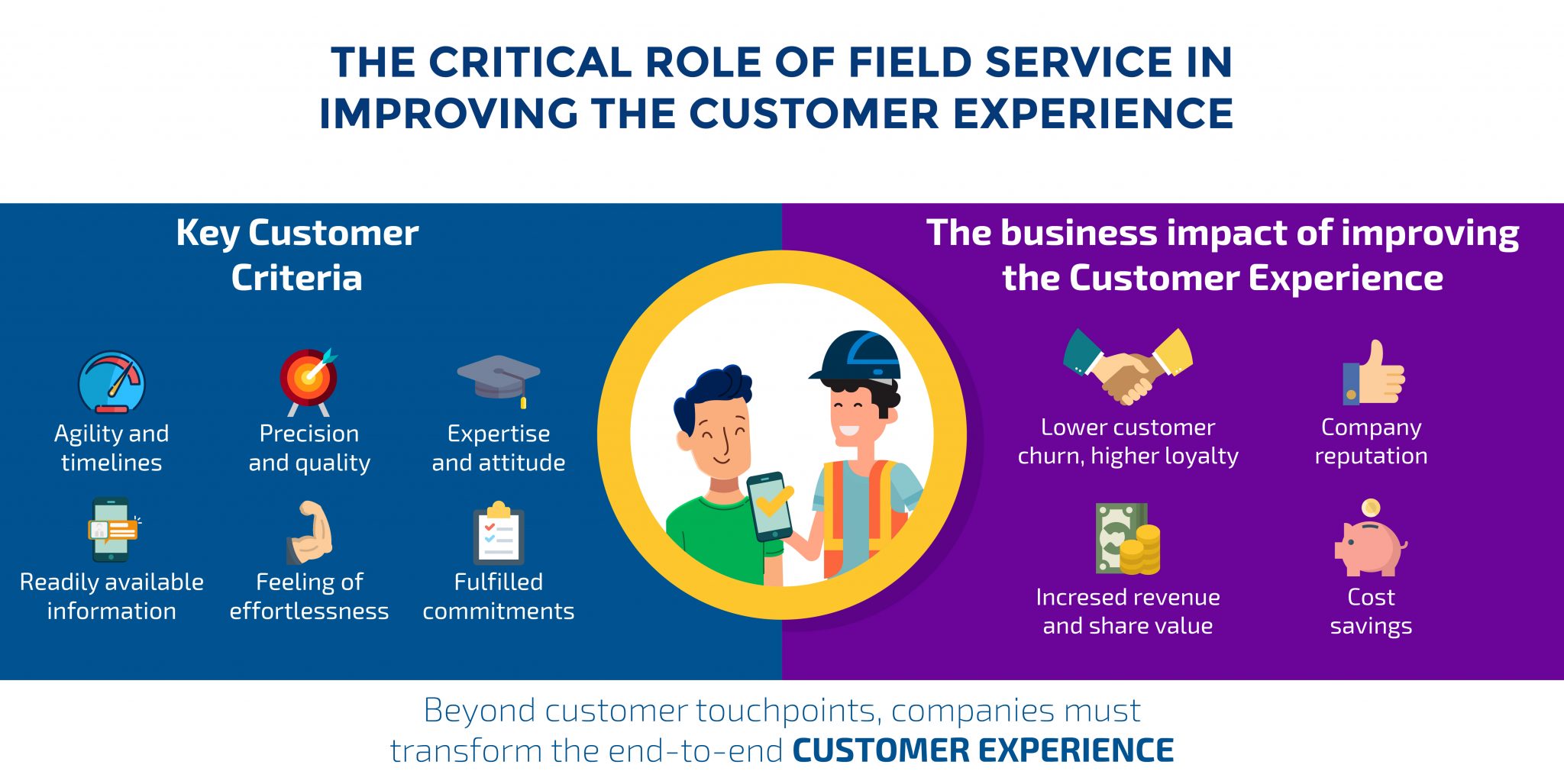Customer experience has become a cornerstone of business performance due to the high cost of customer churn; with field service being a critical component of this experience. Every interaction is an opportunity to shape a customer´s perception, so a top performing company must drive satisfaction in its field service to set a precedent for the entire customer journey.
Customers are nothing like what they used to be decades ago. Starting in 1990, when we entered the age of information, there has been a power shift from service providers to consumers. With online reviews, social networks, and mobile web access, it’s easy for customers to find out anything they want to about a company´s products, services, competitors, and pricing. Customers are now more empowered than ever and they are educating themselves thoroughly before each purchase; they are engaging with companies via any channel they prefer and expecting a consistently excellent service.
According to Esteban Kolsky, founder of thinkJar, a customer strategy consultant, “If customers are not satisfied, 13% of them will tell 15 or more people of their dissatisfaction”.(1) Negative experiences tend to create stronger memories than good ones, and there is no publicity more effective than word of mouth. Kolsky also states that: “67% of customers claim that a bad customer service experience is the primary reason for ceasing to use a service”. This is particularly important for a company´s performance given that attracting new customers can cost 6 to 7 times more than retaining existing ones and the probability of selling a new service to an existing customer is 5 times higher than selling the same service to a prospective customer.(2)
In a study published in 2015, it was revealed that from 2007 to 2014, companies in the top ten of Forrester´s customer experience index outperformed the S&P 500 by over 35%.(3)

Customer experience has emerged as the new competitive battleground and one of the new great frontiers for innovation. In both the utility and telecommunication industries, field service involves multiple key customer interactions such as service installation, maintenance, cancellation, reconnection, and repair. For this reason, many companies interested in improving customer service are focusing on their field operation.
The two most essential factors that customers consider when gauging their satisfaction with a field service visit are agility and timeliness. According to Forrester Research, “73% of consumers say that valuing their time is the most important thing a company can do to provide good service”. In addition to expecting a quick service, customers evaluate the expertise displayed by the field technician, their attitude, the quality of the tasks performed, the amount of information provided and the general perception of a fulfilled commitment. Therefore, not only is a field worker´s technical ability important, but also their ability to interact with customers, as great personal interactions during repair and maintenance contribute significantly to building customer loyalty.
The experience a customer has with their field technician will mold their opinion about the company, and these opinions tend to stick. Moreover, beyond shaping their customers’ perceptions, utility companies must also comply with increasing regulations that protect consumers, which often include standards for response times and quality of service.
Running field operations using automated processes based on real-time customer information is essential for developing good relationships with customers. Utilities and telecommunication companies that focus on improving their customer experience will be in a much better position to survive the intense pressures of their markets and create key points of difference which entice customers to choose and stay with their service. Investing in technology which improves customer experience through field service is a winning strategy that can drive competitive advantage and secure long-term market survival.
(1) Esteban Kolsky. Customer Experience for Executives. Retrieved from https://www.slideshare.net/ekolsky/cx-for-executives
(2) Watermark. Watermark Customer Experience ROI Study. Retrieved from http://www.watermarkconsult.net/docs/Watermark-Customer-Experience-ROI-Study.pdf
(3) Forrester. Forrester’s Top Trends for Customer Service In 2016. Retrieved from http://blogs.forrester.com/kate_leggett/16-01-06-forresters_top_trends_for_customer_service_in_2016




